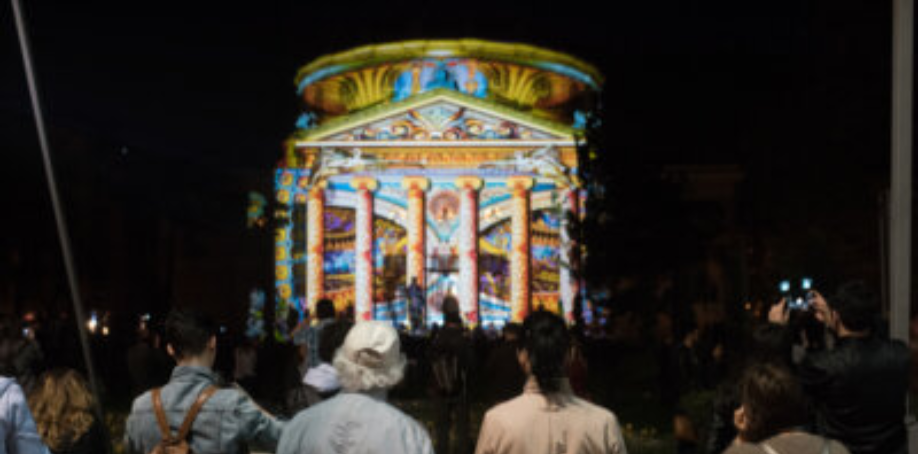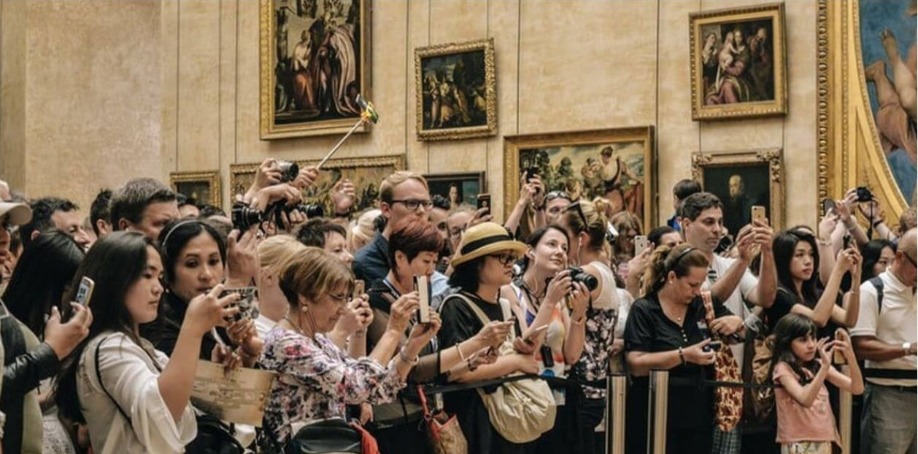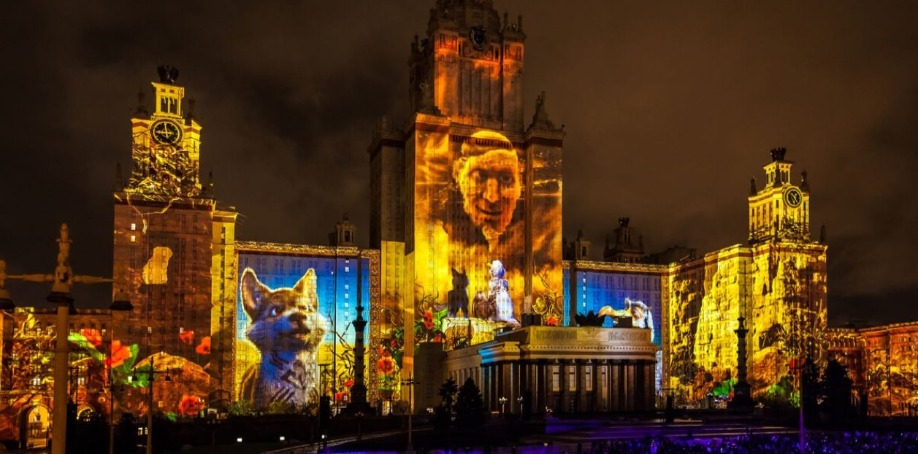
When we think of museums, we think of quiet, cold spaces filled with static art. Whispers fill the air, and roped-off alcoves keep patrons from coming too close to the precious exhibits. Museum projection mapping is turning that model upside down.
Across the globe, institutions are incorporating projection mapping into their displays. The results are interactive, educational and communal. Museums are using projection mapping to leave behind their stuffy images and reach a whole new audience.
Enhance Learning Opportunities
Museums aren't just warehouses of pretty items. They are institutions of education, information and culture. Projection mapping provides the perfect vehicle to bring them alive. People who interact pay attention, says the team at imaging product supplier Epson. They pick up key concepts faster and remember what they have learned. It's easy to grab attention with projection mapping.
Consider the Future Energy Chicago exhibit at the Museum of Science and Industry. Developers from design and technology studio Potion Design used projection mapping, touch screens, motion tracking, and printed sculpture to explain clean-energy concepts. Museum visitors don't passively learn about how clean energy works. They become engineers designing the systems of the future. They see their work in action. They watch how their decisions change the world around them.
Interactivity and engagement are key parts of projection-mapping projects. And they are critical elements when the goal is education.
Support an Artist's Vision
Museum administrators have to please the paying public. But their artists also demand care. And sometimes, artistic visions are difficult to support with brick and mortar buildings.
Consider a recent project from Ideum. The artist, Virgil Ortiz, wanted to create a battle scene branded with his unique vision and flair. The problem: The fight took place in the future on a planet that doesn't exist.
The solution: projection mapping.
The exhibit let visitors walk through a battle. Full-size mannequins, clever audio, and projection mapping of the artist's family symbol and signature bring the artist's vision to life.
The same technique can clarify the past. Take World War II and Poland as an example. Gavin McArthur of Projection Artworks helped design an exhibit to illuminate that time period. "It was of the utmost importance to deliver a show that demonstrated a respectful yet unflinching portrayal of events, to inspire both native and foreign audiences to a greater appreciation of Poland's sacrifice and unvanquished spirit," he said.
The team needed more than photos. Live action, image magnification, and projection mapping created a 20-minute live sensory experience. Visitors felt like they were there during the events of long ago.

Museum Projection Mapping Can Delight an Audience
Projection mapping can transport visitors to another time and place. It can also inject a bit of humor and bliss into what might be an otherwise hum-drum visit.
Artist Rebecca Smith uses projection mapping often in her museum work. She explains, "I love to be able to surprise people and make them break from the ordinary, just for a second, and experience something different."
Projection mapping can certainly add a new element to an expected exhibit. That's the theory behind an IMG Exhibitions exhibit, which is currently touring the world. "Through Victoria the T. rex, we're providing visitors with an in-depth look at the life of the Tyrannosaurus rex and expanding upon existing knowledge to create the most exciting, engaging, and holistic dinosaur exhibition to date,” says John Normal of IMG Exhibitions.
Walk through the exhibit, and you will see dinosaur bones. But projection mapping shows you what those bones look like when covered with flesh. And the scene around this animal comes to life. The result is fascinating — and a little terrifying.
Build a Community
Visiting a museum can be a solitary experience. People jostle for space in front of very small paintings or sculptures, or they wait in line to peer at objects under glass. Projection mapping changes all of that.
Large-scale works invite people to connect. An image projected onto a museum wall, or on the front of a building, can be seen by hundreds or thousands of people at the same time.
Richard Slaney of 59 Productions worked on an installation like this for the Smithsonian's National Air and Space Museum. An estimated half a million visitors over two nights watched images from Apollo 11, projected onto the east face of the Washington Monument.
"Being part of that collective is something we were really embracing in the way we made the show, as we wanted it to feel as if you were watching the moon landings that very night and sharing that moment," explained Slaney.

Technology Can Cut Costs
For many museums, investing in projection mapping means delivering an exceptional experience without incurring significant construction costs. That's one of the main benefits of projection mapping, writes the Society for Experiential Graphic Design. There's no need to alter a building, either permanently or temporarily, to make the magic happen.
An older building can even be an inspiration. Artist Romain Tardy created an audiovisual installation piece in Poland which plays along the beams and rafters of a UNESCO World Heritage Site. The result is surprisingly modern, without putting the delicate building at risk.
For some directors, projection mapping allows for a modern display while the organization considers a remodel. For example, a projection mapping project at the Museum of London takes visitors through a tour of animals of London, while officials contemplate a remodel five years from now.
The group wanted to "experiment with different ways of bringing history to life," says Francis Marshall, senior curator of the Museum of London. And they didn't want to wait for years to tell that story. With projection mapping, they didn't need to.
Projects can be surprisingly cost-effective. The Energy City exhibit in The Houston Museum of Natural Science “needed projectors that could bring a wow factor to the amazing custom animation created for this installation, but even more important was the reliability. The projectors that we installed would need to run more than 50 hours a week for as long as 10 years, with minimal upkeep,” says AJ Freysteinson, creative director and cofounder of production design and execution firm RabCup.
They got them. The projectors ran for more than 3,000 hours in one year. Had the museum used standard lamp-based equipment, they would have replaced them three times in that period. The newer technology requires no such replacement.
An installation like this can enhance a museum's reputation. “In an age where kids are growing up with unlimited access to information and entertainment, our ability to create astonishingly breathtaking and immersive experiences like Energy City is critical to ensuring that museums endure long into the future,” says Dustin Newcomb, director of exhibits at Wiess Energy Hall.
Projection Demonstrates Technical Excellence
In a world where we can have immediate virtual experiences or book a flight at a moment's notice, museums must move forward to survive. "The museum world … is having to become more inventive and more immersive," explains Glenn Dobrogosz, CEO of the Greensboro Science Center. "We need to figure out that modern methodology to create awe and experience for our visitors."
Projection mapping is a good first step, and the technology is improving. Newer projects emphasize interactivity so visitors can do more than just see something amazing. They can become part of the art installation, says Michael Hasset, founder of Australian entertainment technology brand Technical Direction Company.
A commitment to that kind of thinking can help museums attract artists who once seemed out of reach. The Neon Museum, for example, connected with artist Tim Burton to create his first exhibit in more than a decade. Projection mapping plays a huge role in that work. "To say we're flattered that Mr. Burton has chosen our museum for this exhibition would be an understatement,” says Rob McCoy, president and chief executive officer of the Neon Museum.
Your Audience Can Amplify Your Reach
Projection mapping is tailor-made for our connected world. Visitors can take snaps of themselves walking through or interacting with the art. When they do, they inspire another wave of visitors.
Consider the seven-week Mirage art installation at the Met in 2016. Shortly after the opening, more than 1,000 people per day walked through, says the team at Go2 Productions. Most were connected to phones. The branded hashtag popped up on Twitter more than 3,000 times.
Each comment, like and share could mean another ticket sold. And those new visitors could, in turn, inspire even more people.
Images by: agcreativelab/©123RF.com, Alicia Steels, prescott09/©123RF.com


